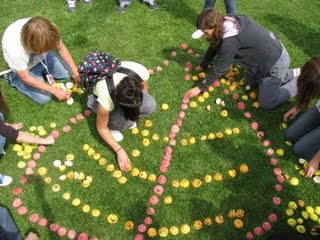



For this project we rolled clay into slabs and molded the slaps into shoes. For this project we needed clay and a model shoe. The class cut the shoe into pieces and cut the clay in similar sized and shaped pieces. While making my shoe the biggest problem I was running into was my clay was getting to dry and cracked when I bent it. After I built my shoe, I let it dry and become Greenware. Then we fired it into

This is my shoe after I cold finished it. I painted it blue because I liked blue and it is the color of our school. We had to dry brush our pieces. Dry brushing is when an artist paints his or her piece with a small amount of paint so there are no brush strokes on the piece. It is called the dry brush technique because the artist paints with a very small amount of paint on their brush. After being painted I added gloss to make it shiny. I did this because I thought it would make my shoe more interesting. I like my final shoe, it doesn’t look realist because of the color but other than that it looks pretty realistic because of the stitching. After this project I learned that when working with clay in general my must work quickly or else the clay will dry out. I don’t like hand building much because I am a perfectionist and I feel like everything has to be perfect so I work slowly. However, I haven’t thrown on the wheel so I have nothing to compare hand building to.
AOI: Approaches to learning
Since this was our first time making something with clay the class as a whole learned something. This is why I thought approaches to learning was the best area of interaction to relate to this project. While creating our shoes we should have learned about the people around us, the clay, and ourselves. From the people around us we should have learned a little about how they see the world. From the clay we should learn about how to be one with the clay and have a deeper understanding of how clay works and what to do to preserve it. From ourselves we should have learned what we like about hand building and the clay.







